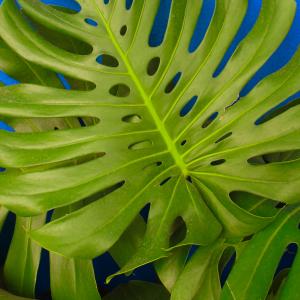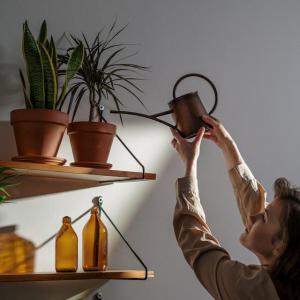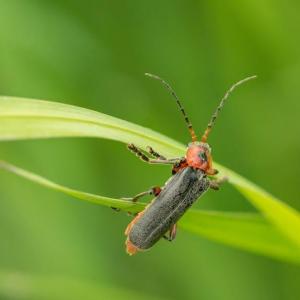Plant Experience
Detail
Monstera's leaves not forming slits or holes: This is usually due to lack of something which will be light, not enough water or not enough fertilizer. If the plant is tall then you may want to check to see if the aerial roots are in compost and if they're not then place the roots in soil or on a moist moss pole.
Monstera's leaves yellowing: If your plant has quite a few leaves yellowing and they're wilting it's possible your over-watering it. If you know the plant has not been over-watered it could mean the plant soil needs fertilizer.
Monstera's leaf tips and edges turning brown: Low humidity and dry air is the most common fault here, although a pot bound plant can have the same affect on a plant.
This Monstera species has aerial roots which are there to support the plant growing. These roots which hang from a stem have to be pushed into the compost and they can be placed on a moss stick (plastic tube with netting filled with peat), if you wish the plant to grow very tall.
Pinch and prune Monstera vines regularly, because they can easily grow wildly out of control. Pinch off new growing tips with your fingers at the maximum height you're allowing for your Monstera and anywhere you'd like to see the vine branch. Prune out excessive growth that's producing few or no leaves and new growth that appears at the outside edges of the plant. Thinning the vines inside the plant will give it room to grow more and larger leaves.
Monstera does flower in it's natural habitat or somewhere that mimics it's natural habit very well. It's very rare to see them flower indoors. These flowers are a whitish colored spathe type with a spadix in the center.
Monstera's leaves yellowing: If your plant has quite a few leaves yellowing and they're wilting it's possible your over-watering it. If you know the plant has not been over-watered it could mean the plant soil needs fertilizer.
Monstera's leaf tips and edges turning brown: Low humidity and dry air is the most common fault here, although a pot bound plant can have the same affect on a plant.
This Monstera species has aerial roots which are there to support the plant growing. These roots which hang from a stem have to be pushed into the compost and they can be placed on a moss stick (plastic tube with netting filled with peat), if you wish the plant to grow very tall.
Pinch and prune Monstera vines regularly, because they can easily grow wildly out of control. Pinch off new growing tips with your fingers at the maximum height you're allowing for your Monstera and anywhere you'd like to see the vine branch. Prune out excessive growth that's producing few or no leaves and new growth that appears at the outside edges of the plant. Thinning the vines inside the plant will give it room to grow more and larger leaves.
Monstera does flower in it's natural habitat or somewhere that mimics it's natural habit very well. It's very rare to see them flower indoors. These flowers are a whitish colored spathe type with a spadix in the center.
Album (1)

Plants Encyclopdias
2016-08-17

Name: Swiss cheese plant
Latin: Monstera deliciosa
Origin: South America
Plant height: 100 - 500 cm
Reproduction: #Stems
Difficulty level: #Medium
Tags: #SouthAmerica #Monsteradeliciosa

Latin: Monstera deliciosa
Origin: South America
Plant height: 100 - 500 cm
Reproduction: #Stems
Difficulty level: #Medium
Tags: #SouthAmerica #Monsteradeliciosa

Elite Article













